Wild Drive Field Guide
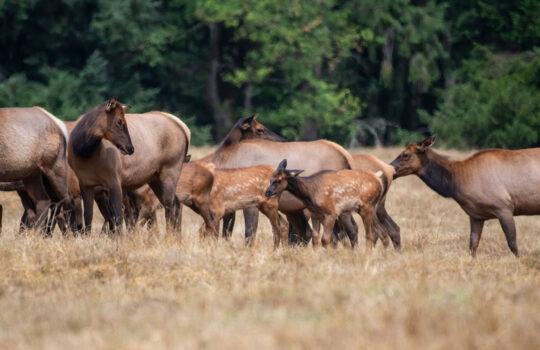
Welcome to your Wild Drive premier tour in Northwest Trek’s 435-acre Free-Roaming Area! On your tour today, you’ll encounter some of the dozens of native Northwest animals that call our forest and meadows home.
You will get instructions at check-in on how to tune in to hear the tour guide narration.
Thank you for following these important rules to ensure a safe experience for you and our animals:
– Stay in your vehicle with doors closed at all times. All animals are free-roaming and may approach the vehicle.
– All tailgates, doors and hatchbacks must be closed at all times.
– Do not attempt to touch the animals. Do not lean out of your window.
– Absolutely NO feeding the animals.
– Do not honk your horn. This could frighten or cause the animals to stampede or kick your car, which could cause major damage to your automobile.
– Stay on the paved tour route – the average speed limit is 5 MPH. Always follow the lead car and stay on designated roadways.
– Remain in the center of the road. Edges may be uneven.
– Maintain adequate distance from the vehicle ahead of you to prevent accidents.
– Please make every effort to keep all articles inside your vehicle. If something falls out, do not stop or try to retrieve the item yourself. The trailing car will be scanning for dropped items and will return them to the circle drive where your tour began. You may also call 360-832-6117 and press 0 to notify a staff member.
Animals can be found anywhere throughout the tour, so be sure to look carefully! Some may be found grouped in herds, others you might see alone. How many different animals can you see?
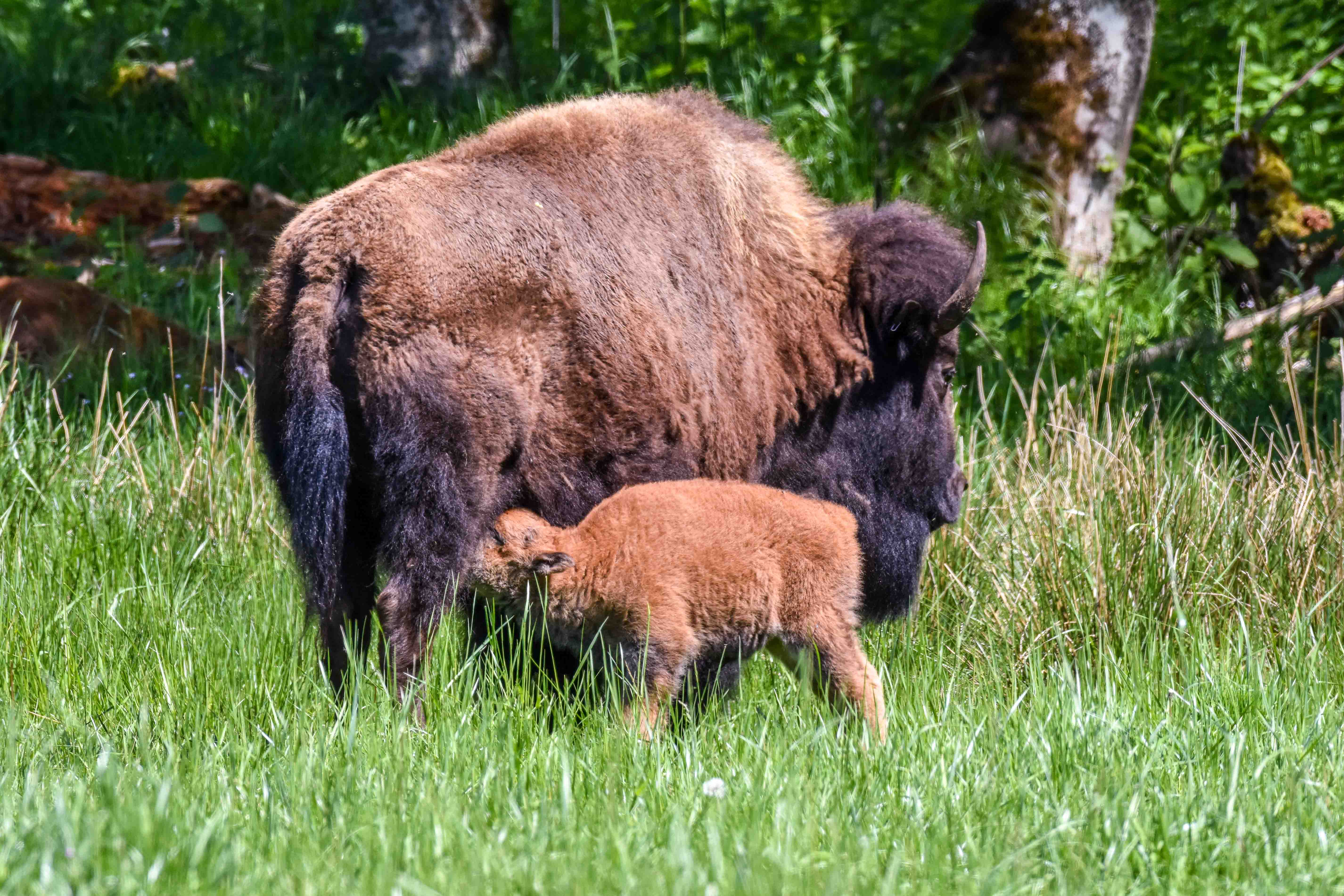
Adult bulls (males) weigh between 2,000 and 3,000 pounds – the size of a small car! Bison are a conservation success story. Once numbering in the millions, bison were hunted to near extinction after the Civil War. Today, thanks to efforts to save them, there are nearly 20,000 bison in managed herds across the country. Bison play an important role in keeping plains ecosystems healthy by aerating soil with their hooves, creating seasonal wetlands with their wallows and depositing seed-laden fertilizer.
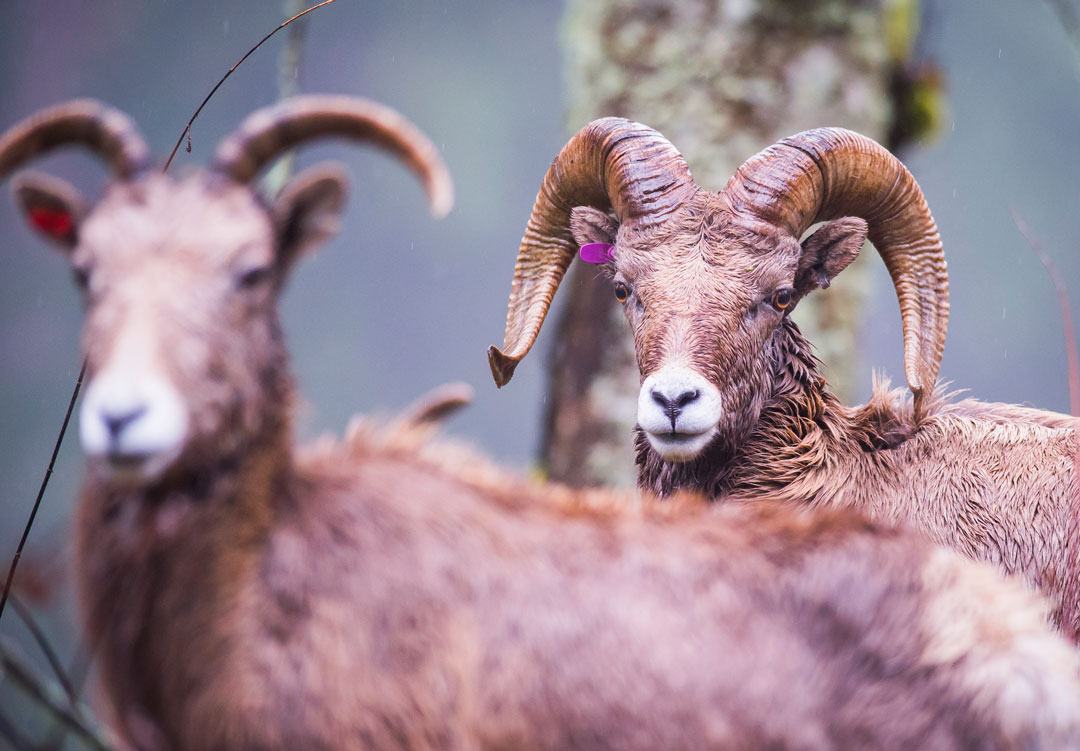
Bighorn sheep often keep to the edges of the meadows and hillsides. Look for the rams (males) with their large, curling horns. During the breeding season, rams compete in head-butting jousts to determine dominance and win mates. Two rivals will face each other, rear up on hind legs then slam their heads together with a loud crack. Their specially adapted skulls, neck tendons and vertebrae help prevent serious injury. Bighorn sheep are found on grassy mountain slopes and rugged, rocky cliffs in central and eastern Washington.

Mountain goats wear shaggy white coats that keep them warm and well-camouflaged on the steep mountain slopes they call home. Look for our six goats (2 males, and 4 females). Five of them were part of a group translocated from Washington’s Olympic Mountains (where they are non-native and destructive) to the Cascades (where their populations are depleted). Too small to survive on their own, when these kids couldn’t be paired with a known mother, they joined our Northwest Trek animal family.
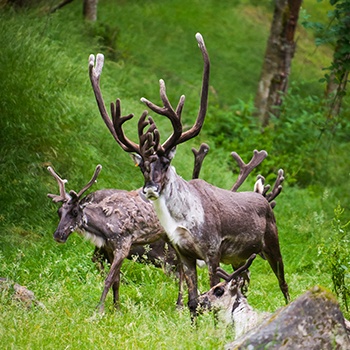
Caribou often make their presence known during tours. They are quite bold and often hang out along the road, but don’t be tempted to touch them! Listen for a clicking sound when they walk – it’s made by a tendon slipping over bones in their feet. Both male and female caribou grow antlers, making them unique within the deer family. You might know caribou by another name: reindeer! They are the same species, but different names are used by different people. Most of the time, the animal that scientists call “Rangifer tarandus” is called “caribou” in North America and “reindeer” in Europe and Asia, but all three names can be used everywhere.
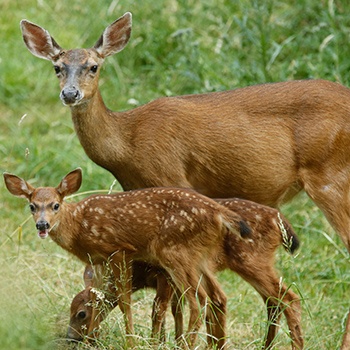
Black-tailed deer have adapted very well to co-existing with people, often frustrating gardeners with their appetite for delicious flowers! Until they are strong enough to flee predators, the spotted fawns are left alone while their mothers go off to feed. Fawns are born having little odor and remain very still, keeping them well-hidden from danger.
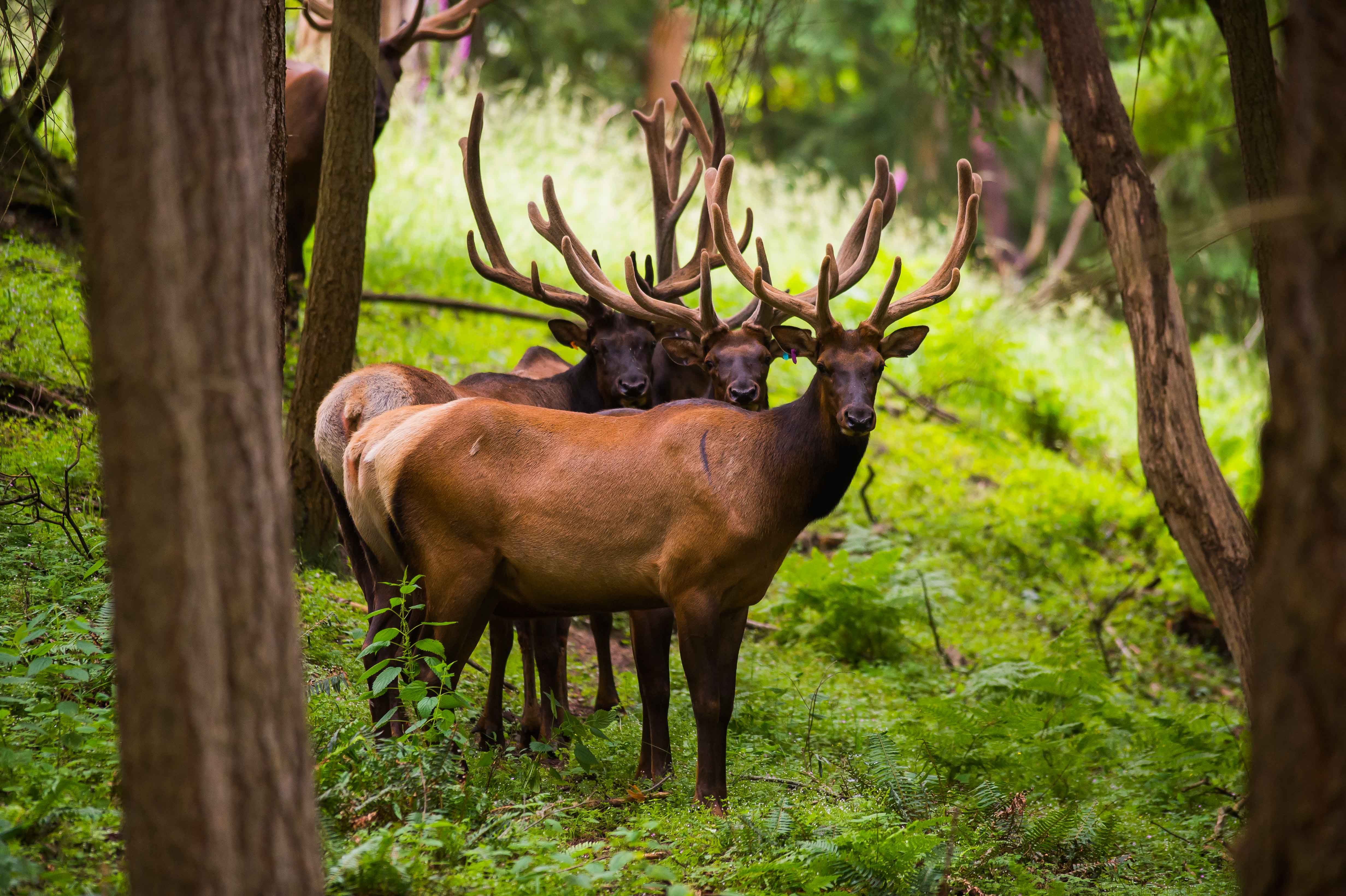
Adult male Roosevelt elk grow a beautiful set of heavy antlers every year. In early spring, antler growth begins and the new antlers are covered in a layer of furry skin called velvet. This velvet is full of tiny blood vessels carrying oxygen and other nutrients to antler tips, allowing them to grow up to 1 inch every day! In early fall, the antlers will stop growing and the velvet will peel back, revealing the white bone underneath. After the fall rut (mating season), the elk will shed their antlers and the process will begin again!
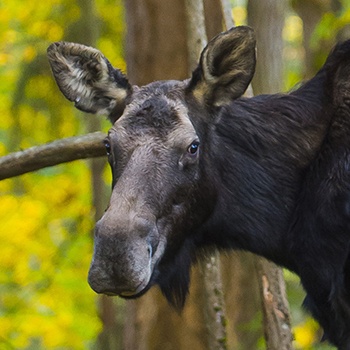
Moose are browsers, meaning they eat leaves, buds and other woody plant materials. Look carefully for our moose among the trees; despite their large size, they blend in well! Moose are excellent swimmers and can even dive down up to 18 feet to feed on aquatic plants on the lake bottom. They can also swim for over 5 miles at a time! Moose have been expanding their range in Washington as fire and logging creates habitat with young, tender plants they prefer.